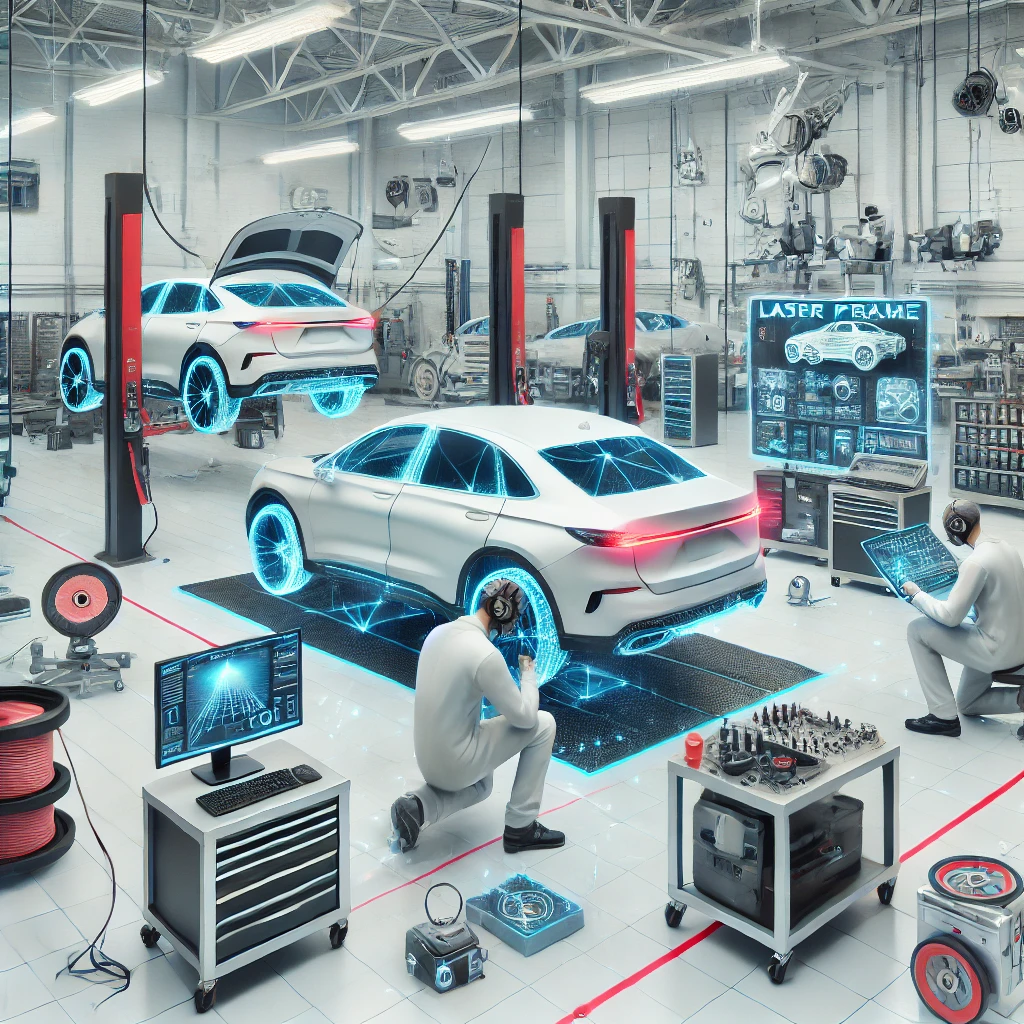In the ever-evolving world of automotive repair, body shop technology is setting new standards in efficiency, accuracy, and safety. Whether it’s fixing dents, repairing damaged frames, or restoring paint, advanced technology is transforming how body shops work. This article dives into the innovations driving body shop technology and their impact on both repair professionals and car owners.
Table of Contents
What is Body Shop Technology?
Body shop technology refers to the tools, machines, and digital systems used to diagnose, repair, and restore vehicles in auto body shops. From computerized diagnostics to cutting-edge paint systems, these technologies enable quicker, more precise repairs.
Key Components of Body Shop Technology
- Computerized Diagnostics Computer diagnostics have replaced manual inspections, providing detailed insights into vehicle issues. These systems identify problems with high accuracy, allowing technicians to start repairs faster and reducing guesswork.
- Laser Frame Alignment Traditional methods of frame alignment were often inaccurate. Laser frame alignment, however, ensures precision by using laser beams to measure even the smallest misalignments. This technology is critical for structural repairs, guaranteeing a vehicle’s frame is safe and properly aligned.
- 3D Printing in Parts Repair 3D printing allows body shops to create replacement parts in-house, reducing wait times and costs. For rare or discontinued parts, 3D printing offers a convenient and eco-friendly solution.
- Paint Matching Technology Gone are the days of mismatched paint. Digital paint-matching tools analyze a vehicle’s existing paint and recreate an exact match. This precision not only improves aesthetics but also ensures a seamless finish.
Benefits of Body Shop Technology
Enhanced Accuracy
New technologies like laser frame alignment and computerized diagnostics lead to more accurate repairs. Precision is crucial in collision repairs, as it impacts both the appearance and safety of the vehicle.
Time Efficiency
Advanced tools and automation speed up the repair process. For instance, 3D-printed parts eliminate the need for ordering and waiting, while diagnostics tools reduce inspection times, getting cars back on the road faster.
Cost Savings for Customers
While technology requires initial investment, it reduces long-term costs. Faster diagnostics and repair processes mean lower labor costs. In many cases, 3D printing also cuts down on expensive part replacements.
Technological Innovations in Body Shops
Augmented Reality (AR) for Training
Body shops are increasingly using AR to train new technicians. By overlaying digital information onto real-world images, AR allows technicians to learn complex repair techniques hands-on without working on an actual vehicle.
Robotic Assistance in Repairs
Robots are helping technicians with repetitive tasks like sanding or welding, enhancing precision and reducing fatigue. These robotic systems not only improve repair quality but also make the work environment safer.
Eco-Friendly Solutions
Many body shops are adopting environmentally friendly practices through technology, such as water-based paints and efficient waste management systems. These eco-friendly solutions help reduce the environmental impact of automotive repair.
Choosing a Body Shop with Advanced Technology
When selecting a body shop, it’s beneficial to consider whether they use modern technology. Here are a few tips:
- Ask About Diagnostic Tools: Ensure the body shop uses computerized diagnostics for accurate assessments.
- Check for Frame Alignment Tech: Laser frame alignment is essential for collision repairs, so it’s a good indicator of a shop’s quality.
- Look for Paint Matching Capabilities: A shop with digital paint-matching tech ensures a flawless finish, matching the vehicle’s original color perfectly.
Conclusion: The Future of Body Shop Technology
Body shop technology continues to evolve, making auto repairs faster, safer, and more reliable. These advancements benefit both repair professionals and car owners by ensuring quality repairs and cost savings. As technology progresses, body shops are set to become even more efficient, promising a future where auto repairs are seamless and environmentally friendly.
